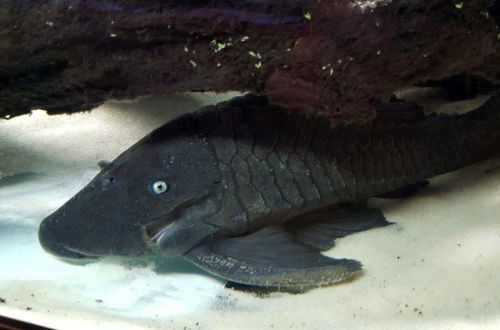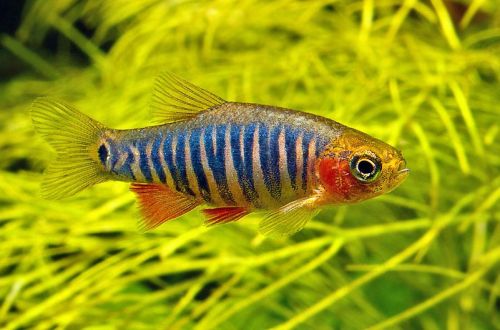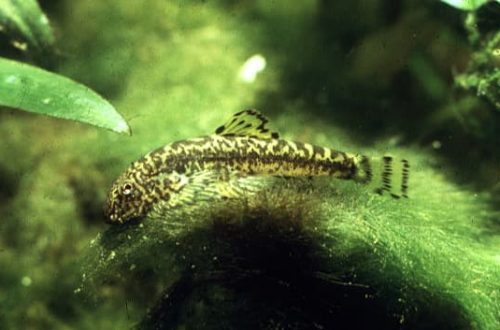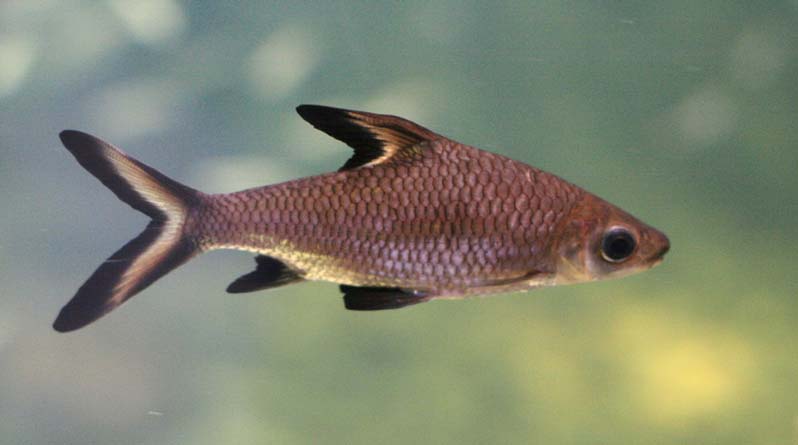
Shark boy
The tricolor shark or shark ball, scientific name Balantiocheilos melanopterus, belongs to the Cyprinidae family. The name indicates an external resemblance to a formidable representative of the predatory world – a shark, however, only the appearance was inherited from it. The fish is peaceful and can be kept together even with small species, despite its impressive size, the main condition is that the neighbors in the aquarium must be large enough not to fit in the mouth of the Tricolor shark.

Habitat
Shark ball was described by Bleeker in 1851. The fish is common in Southeast Asia, in Sumatra and Borneo, in Indochina. Natural habitats are large and medium-sized rivers, as well as natural lakes. Lives throughout the water column. The basis of food is small crustaceans, insect larvae, as well as algae, phytoplankton (microalgae) and other plant matter.
Currently, in the wild, the fish is on the verge of extinction due to the deterioration of the ecological situation in the region. All fish presented in the trading network is grown artificially in special nurseries in Indonesia and Thailand.
Requirements and conditions:
- The volume of the aquarium – from 560 liters.
- Temperature – 22-28°C
- Value pH — 6.0–8.0
- Water hardness – soft (5-12 dGH)
- Substrate type – any
- Lighting – moderate
- Brackish water – no
- Water movement – moderate
- Size – up to 30 cm.
- Nutrition – any with vegetable and protein supplements
- Life expectancy – 10 years
Description
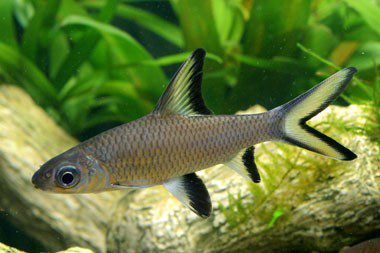
A large fish, reaching a length of 30 cm, has an elongated torpedo-shaped body with a high triangular dorsal fin. Large eyes help orientation and search for food. The coloration is silvery with a golden sheen, slightly darker in the upper part – on the back and lighter towards the belly. The fins, including the caudal, are yellow or white, with black edging along the edges.
Food
The fish is omnivorous, in the aquarium it will be happy to use dry industrial food (flakes, granules), fresh herbs and high-protein foods. A balanced diet consists of dry food mixed with finely chopped pieces of spinach, peas, fruits, lettuce and other greens. You can diversify the diet with live or frozen foods, such as mosquito larvae, bloodworms, brine shrimp or small pieces of mussels, shrimp.
Feeding should be done 2-3 times a day, the amount of food that the fish can eat within 3 minutes.
Maintenance and care
The size of the fish and the schooling lifestyle require a large aquarium of at least 560 liters with a powerful filtration and aeration system, thanks to which two tasks are solved at once: purification and oxygenation, as well as creating the movement of water necessary for the fish. The design of the aquarium does not matter, you just need enough space for swimming, everything else is up to the taste of the aquarist. Since fish do not harm plants, unlike other large fish, even the most delicate species can be grown in an aquarium.
Social behavior
Peace-loving schooling fish, despite the name, will not prey on smaller neighbors if they are large enough not to fit in the mouth, i.e. it is already dangerous to keep fish 2–3 cm long. Also, inconvenience will be delivered to slow calm species.
There is a hierarchy in the flock, a large fish becomes a dominant individual, if only two or three tricolor sharks are kept together, the weakest will be constantly attacked, so the optimal number is at least 5. When kept alone, it becomes aggressive and can attack neighbors in the aquarium.
Breeding / breeding
In appearance, it is almost impossible to distinguish a male from a female. There are few details about the reproduction of fish in captivity, when kept in an aquarium, only a few successful cases have been recorded, but it has not yet been possible to commercialize. In large quantities, fish are bred in the nursery with the use of hormones.
Diseases
With proper care, fish are not susceptible to most diseases. For more information about fish diseases and their treatment, see the section “Diseases of aquarium fish”.



